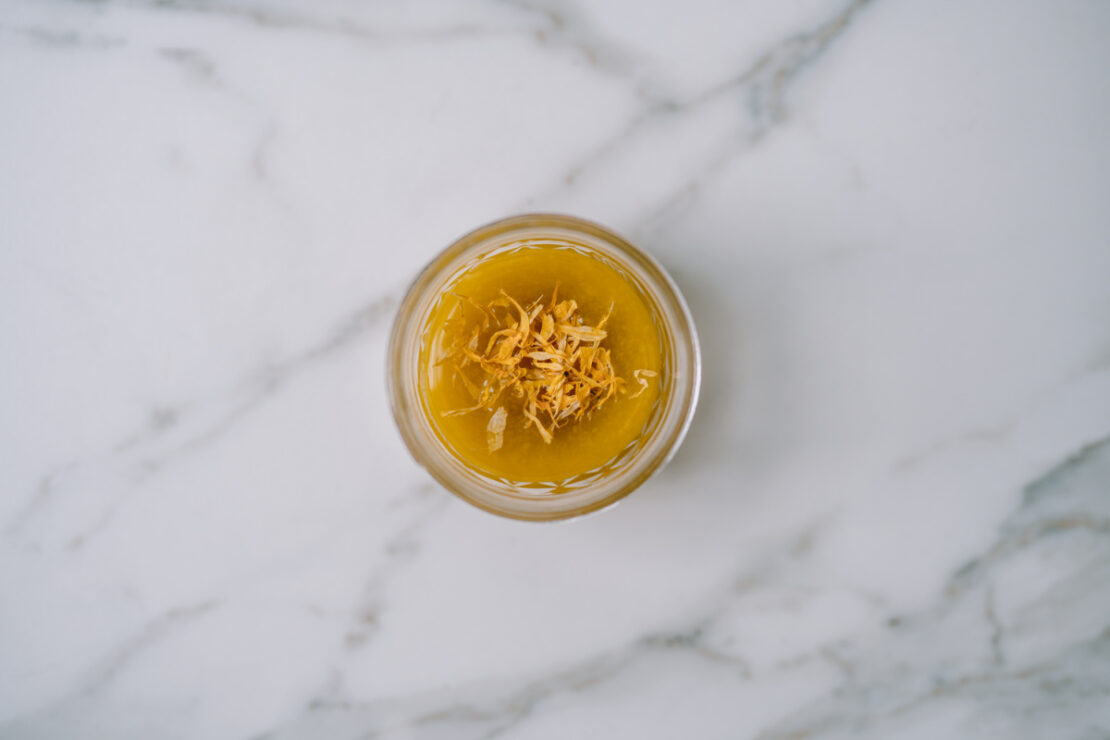
DIY Baby Herbal Diaper Balm to Soothe Rashes and Keep the Skin Healthy
A baby’s delicate skin is particularly sensitive to environmental influences and harmful substances. Therefore, it is critically important to choose products that contain substances that don’t irritate. For instance, if you are dealing with a diaper rash, it is important to use a diaper balm that is safe and healthy. Creating your own allows you to avoid harmful ingredients and choose specific herbs and oils that are really suitable and beneficial to a baby’s skin!
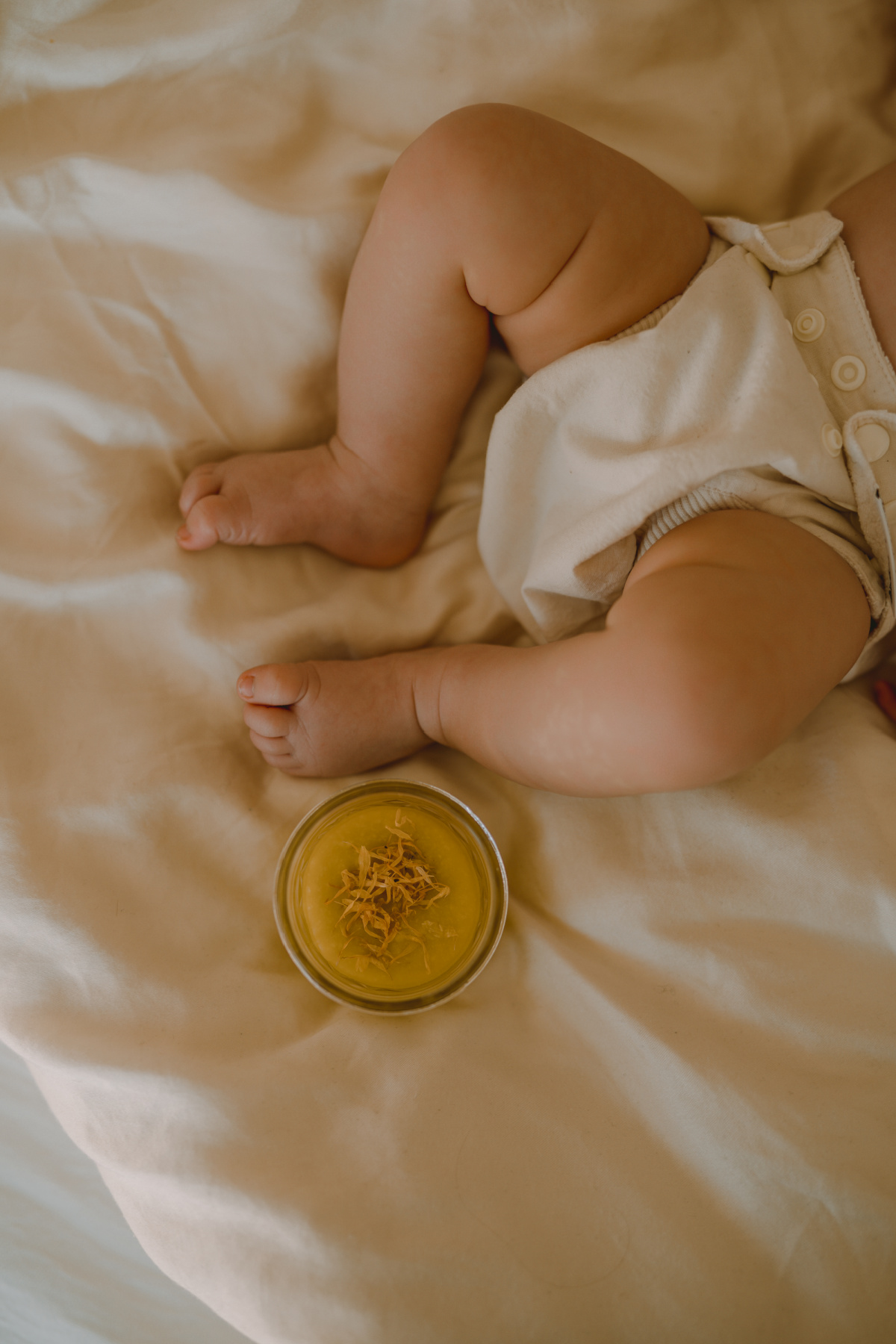
Keeping Baby’s Skincare Simple, Gentle, and Natural
For babies with healthy skin, usually skincare products are not required. In the first few weeks after birth, the baby’s skin is still so sensitive that even natural skincare products without additives can cause irritation. The so-called “vernix” that covers and moisturizes the baby’s skin from the womb is antimicrobial, forms a protective barrier, and therefore should be left on the skin as long as possible. Later on, to prevent reddened skin, it is recommended to check whether the skin is fully dry before putting on a fresh diaper. Letting the baby move frequently without a diaper, so that air can get to the bum, can also prevent diaper rashes.
If baby’s bottom does become red and irritated, a little wool in the diaper to support healing or this homemade herbal diaper rash balm recipe (shared below) can help.
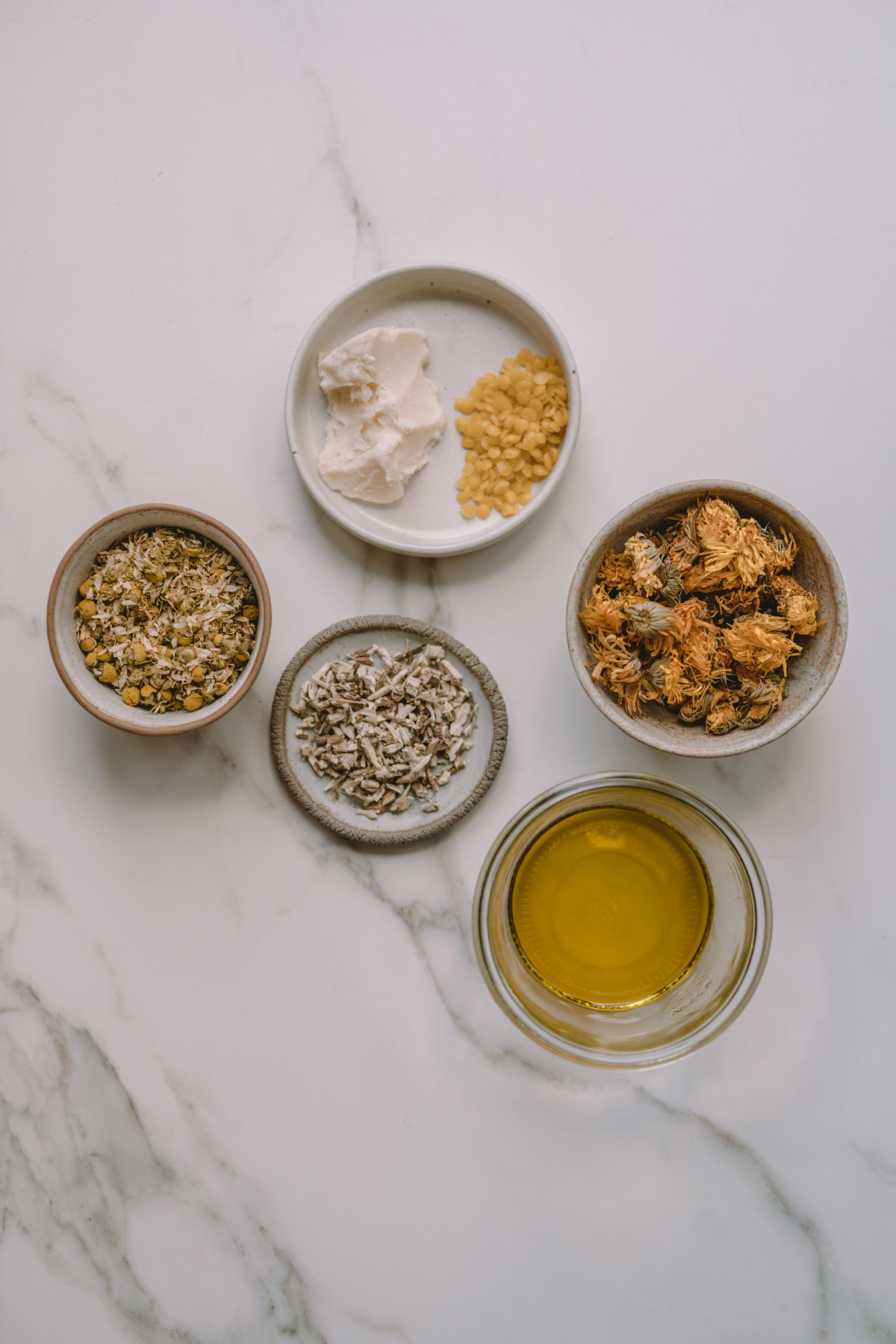
Choosing Herbs for a Diaper Balm
Infusing olive oil with the following herbs offers their beneficial constituents when the herbal oil is applied to the skin. You can turn the herbal oil into a wonderfully rich diaper balm by combining it with shea butter and vitamin E oil. Adding beeswax to this blend helps to keep it smooth and gives it a balmy texture, which is great for holding the moisture in the skin.
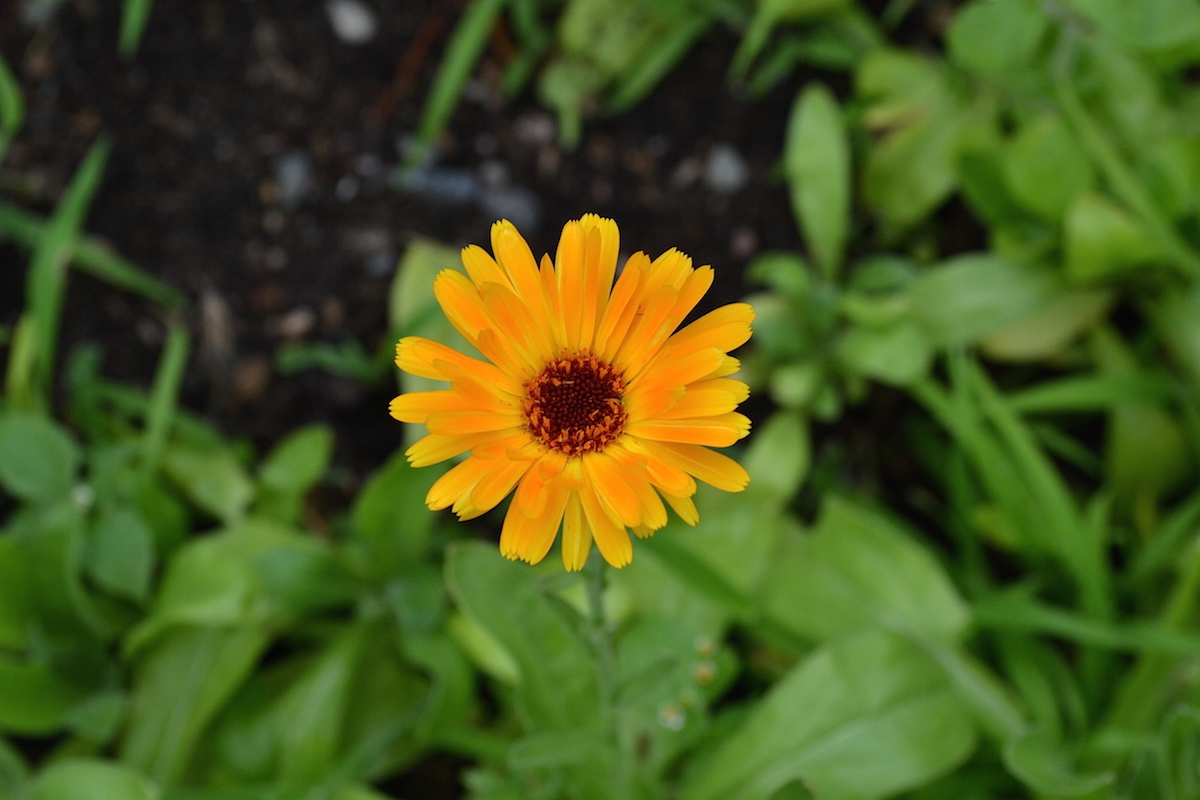
Calendula (Calendula officinalis) Flower
This beautiful luminous orangy-yellow flower has a long and extensive history of use and is probably best known as a skin herb, especially famous for its presence in many baby skincare products.
Calendula’s anti-inflammatory and astringent actions combined with its antibacterial, antiviral, vulnerary, and antifungal properties (Hoffmann, 2003) make it a common choice for a wide variety of baby skin issues.
The blossom provides triterpene saponins and mucilage, both of which exert a softening and soothing effect on external skin surfaces and on internal mucous membranes. Calendula also contains carotenoids which speed up the regeneration of skin, and flavonoids which reduce cellular aging and maximize the integrity of cell walls (Arora et al., 2013).
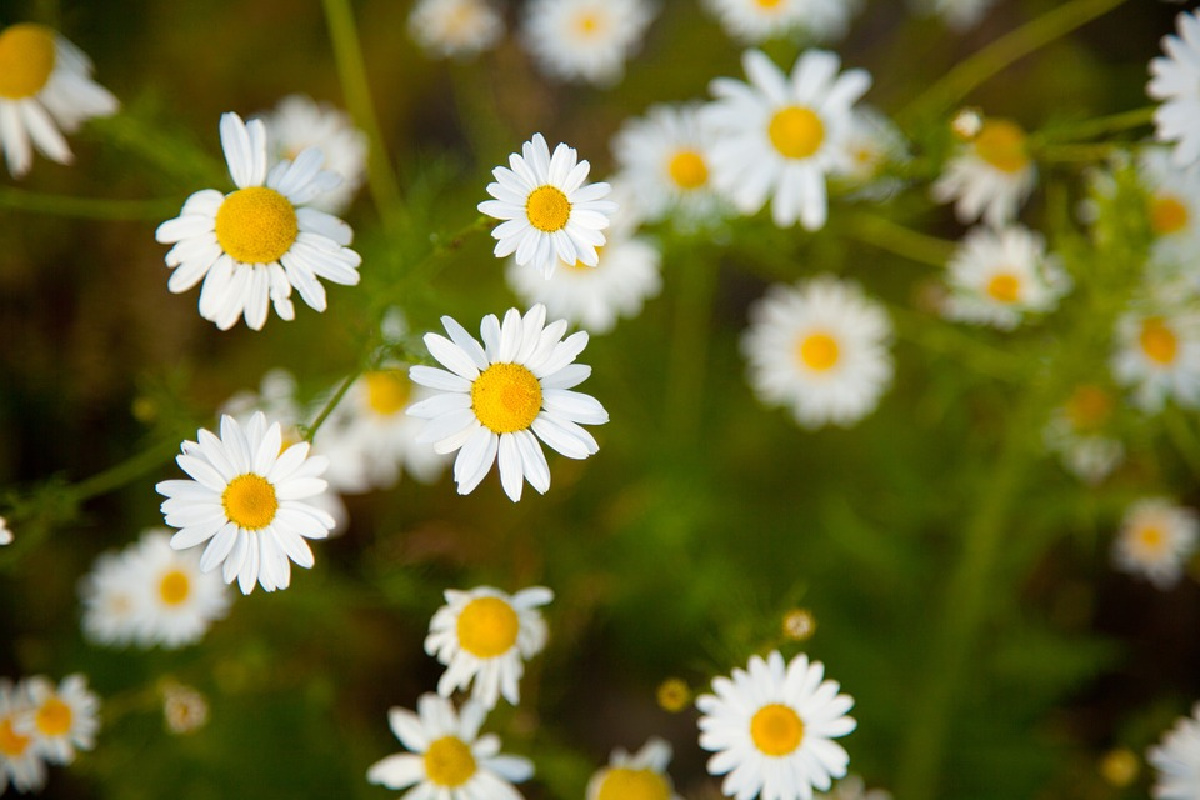
Chamomile (Matricaria chamomilla or Chamaemelum nobile) flower
With a wide variety of applications throughout a long span of history, it isn’t surprising that chamomile has earned its reputation as a home apothecary herb, especially for skin complaints. Its anti-inflammatory, calming, and vulnerary properties gently yet powerfully help to soothe inflammation while encouraging skin repair. Chamomile can be used topically for skin irritations such as rashes and is also a wonderful choice for delicate baby skin (Chevallier, 2007).
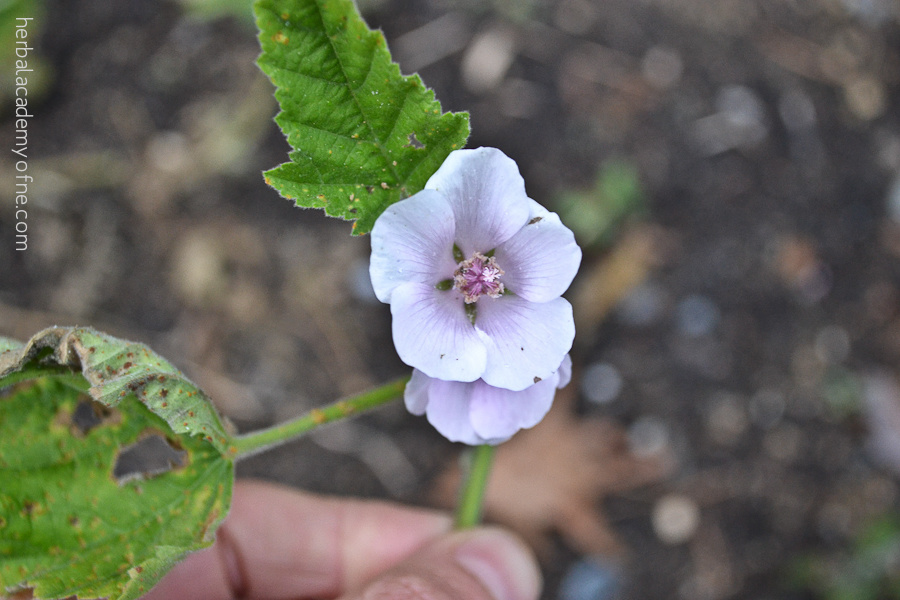
Marshmallow (Althaea officinalis) root
The actual marshmallow plant was the foundation for the so-named candy, as it’s indeed a plant that embodies softness. It has been a gentle and nutritive plant ally to humans for many thousands of years. Mucilage substances in its roots and flowers protect the plant from drying out. These also bind moisture in the delicate skin of babies and calcium in the root stimulates the skin’s own forces and tissue growth, which help protect against harmful environmental influences (Hoffmann, 2003).
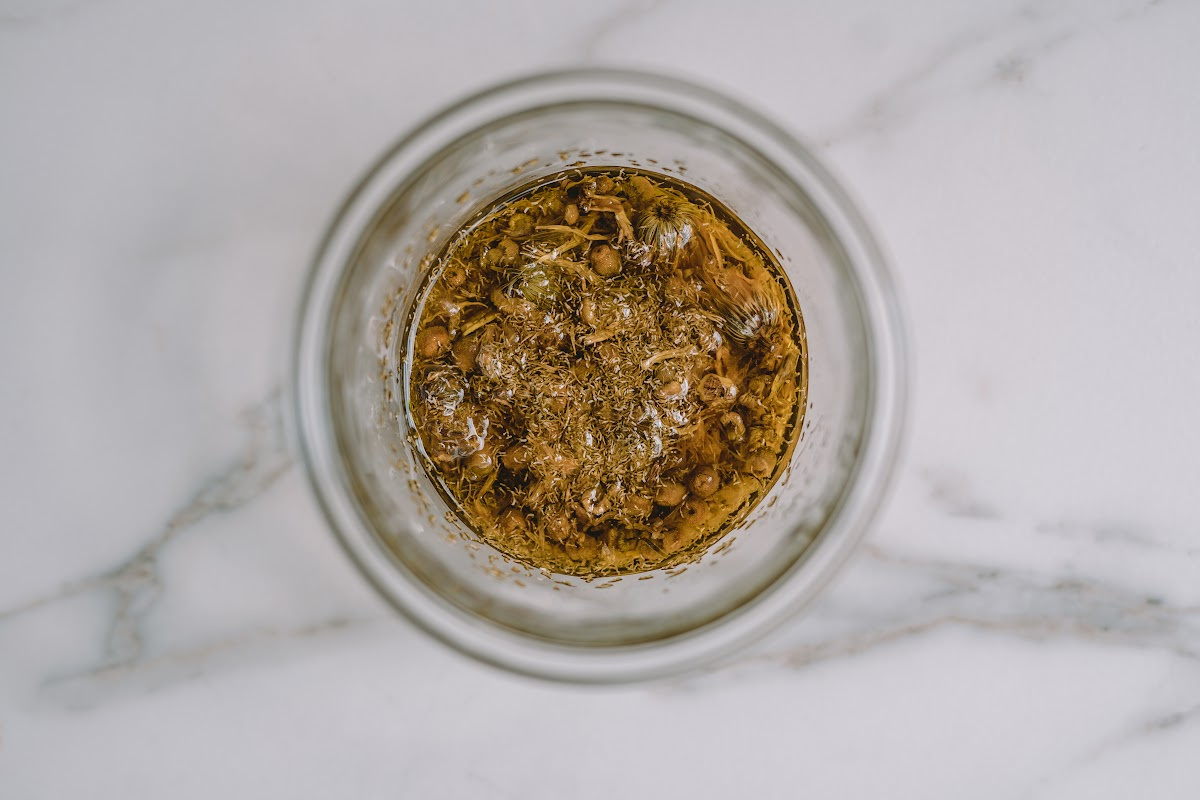
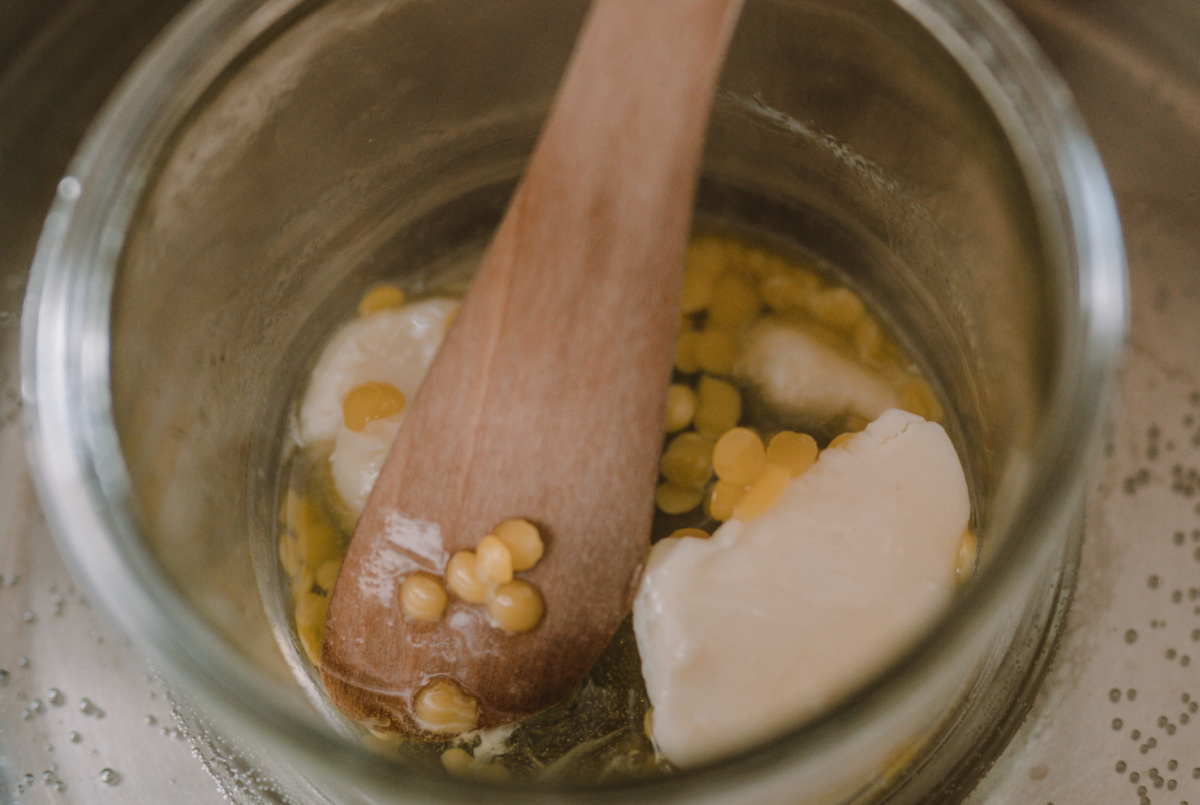
This wonderful soothing balm is not only great for diaper rashes, but also for other irritated and dry parts of baby’s delicate skin! Anti-inflammatory, vulnerary, and antibacterial properties from calendula, chamomile, and marshmallow, combined with olive oil and shea butter, help to soothe the skin and hold in moisture. This recipe was inspired by Herbal Academy’s Botanical Skin Care Course.
¼ cup olive oil Step 1: Infuse the olive oil with the herbs (Choose option 1 or 2):
Option 1 (Infuse in 4-6 weeks):
Option 2 (Infuse in 8 hours):
Step 2: Prepare the Balm:
Herbal Baby Diaper Balm
1 tablespoon calendula (Calendula officinalis) flower
1 tablespoon chamomile (Matricaria chamomilla or Chamaemelum nobile) flower
1 tablespoon marshmallow (Althaea officinalis) root
3 tablespoons shea butter
2 teaspoons beeswax
¼ teaspoon vitamin E oil
How to use: with a clean spatula, take a small amount of the balm from the jar and gently melt it between your fingers, applying it onto baby’s irritated skin.
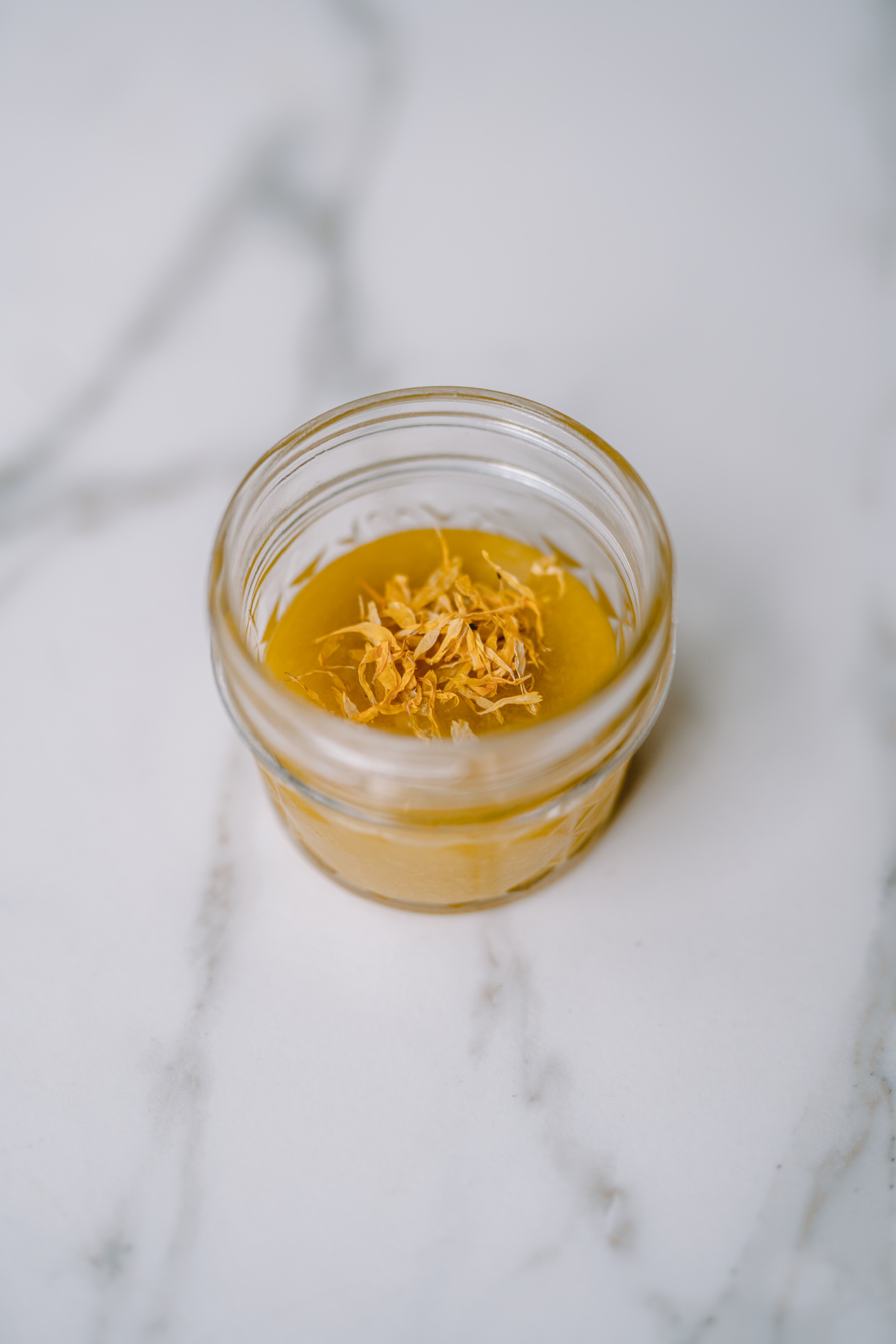
In Closing,
A baby’s skin is delicate and sensitive, so we want to soothe it with simple and natural ingredients. This lovely herbal diaper balm does just that, without unwanted ingredients and with the added benefit of soothing botanicals!
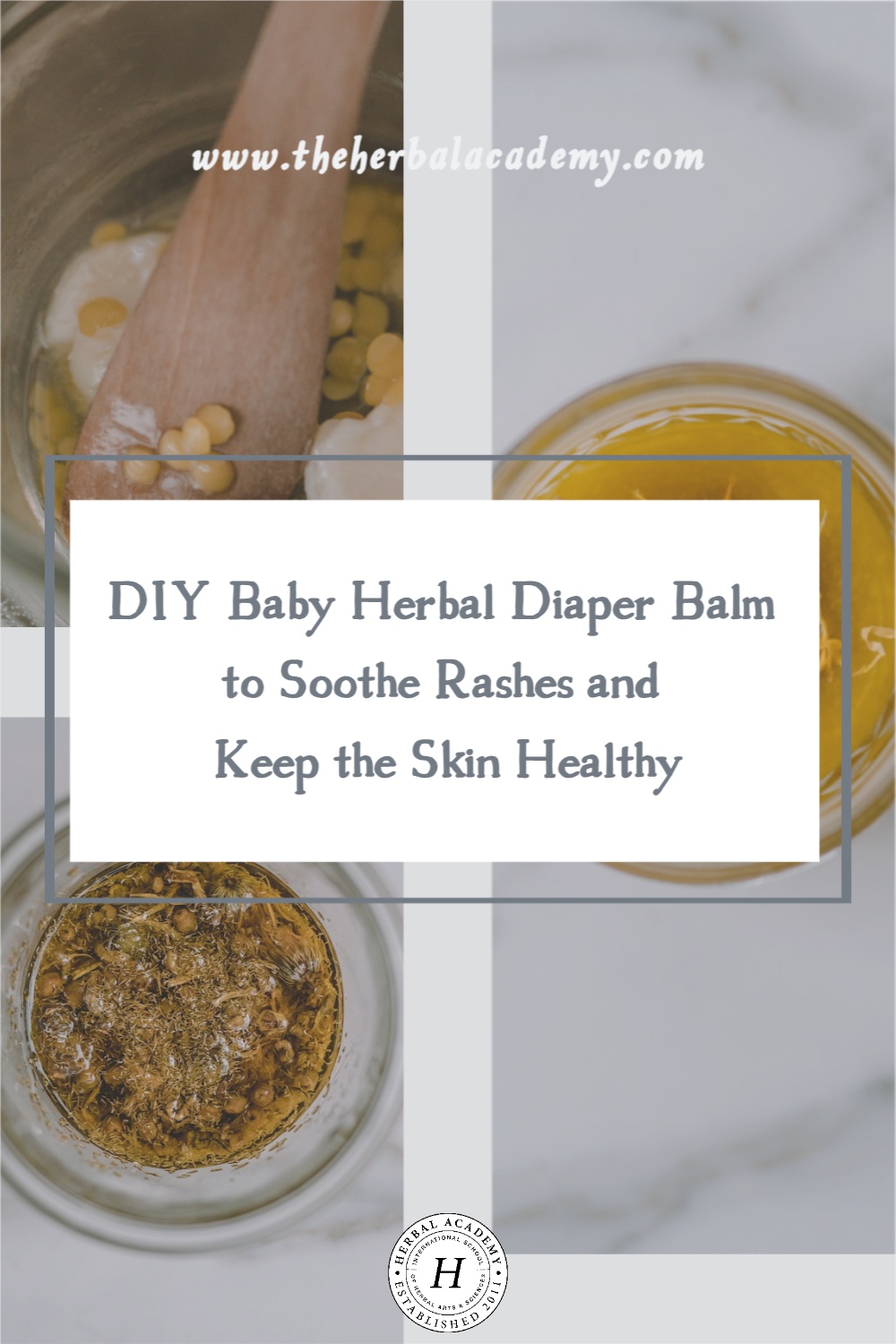
REFERENCES
Arora, D., Rani, A., & Sharma, A. (2013). A review on phytochemistry and ethnopharmacological aspects of genus Calendula. Pharmacognosy Reviews, 7(14), 179–187. https://doi.org/10.4103/0973-7847.120520
Chevallier, A. (2007). Herbal remedies handbook. DK Publishing.
Hoffmann, D. (2003). Medical herbalism: The science and practice of herbal medicine. Healing Arts Press.







